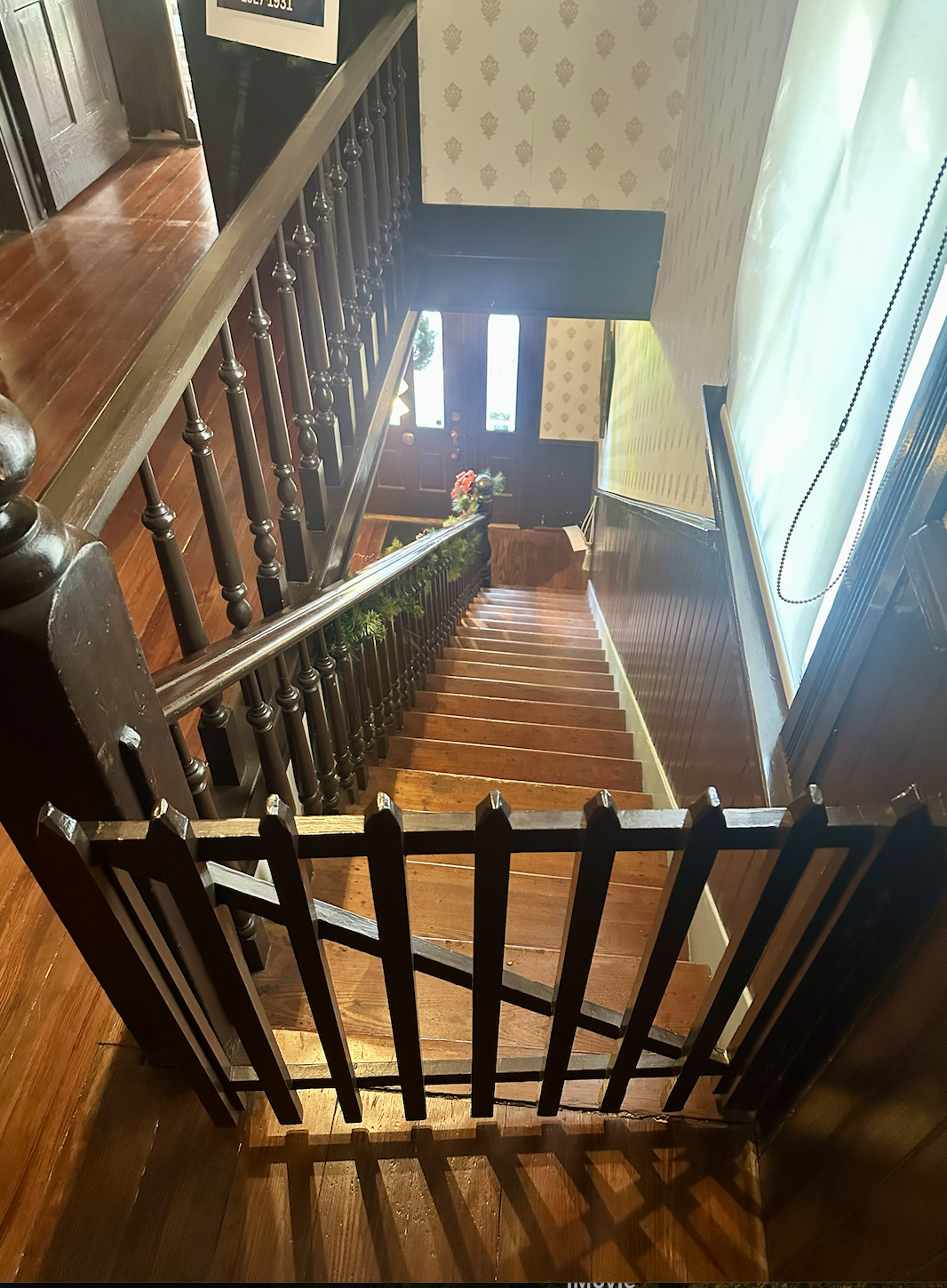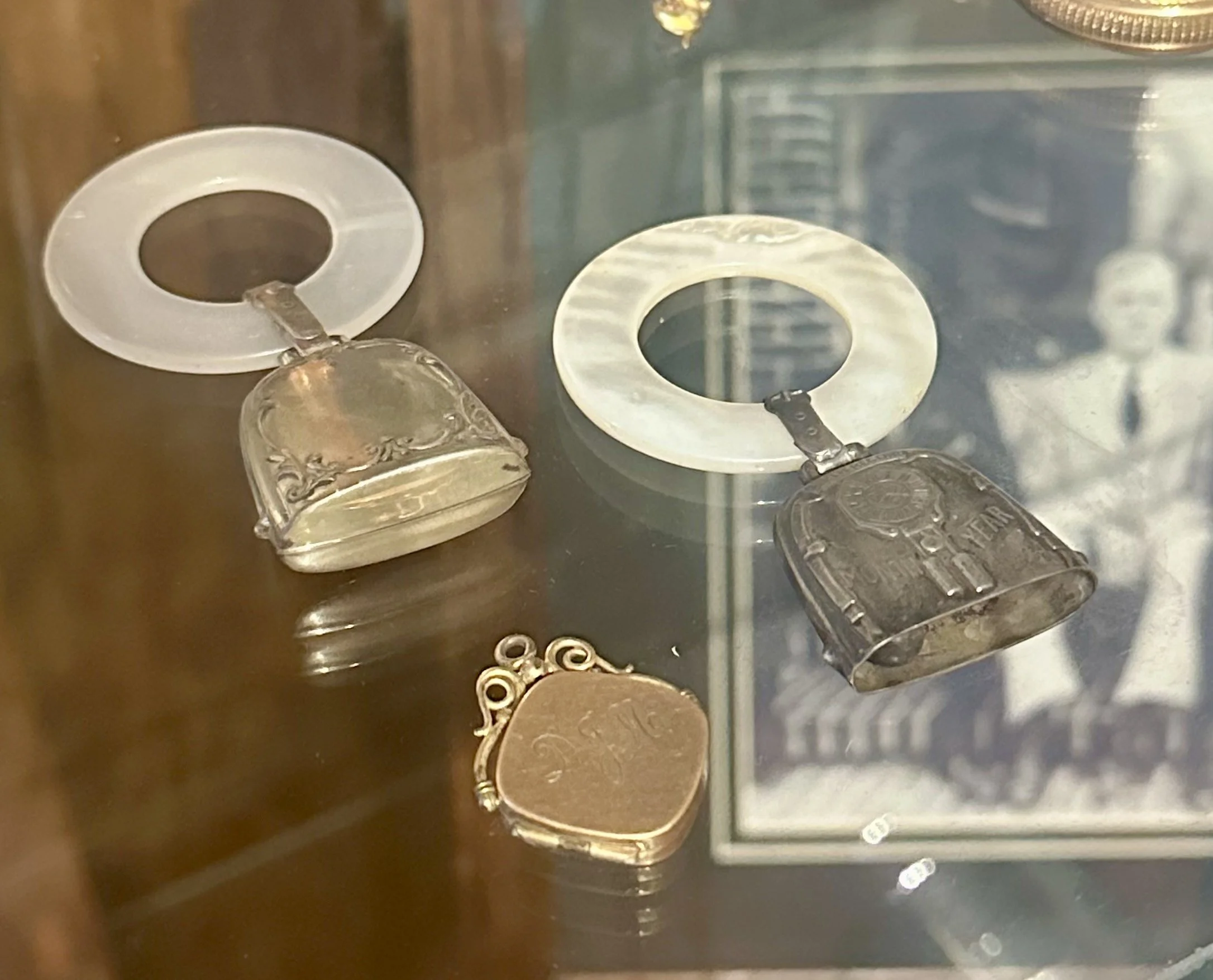Upstairs Baby Gate - In approximately 1892, Dan’l Moody added this gate after Mary was born so that she - and later Dan - would not tumble down the steps.
These are Dan and Mary’s teething rings from the 1890s. Victorian mother-of-pearl teething rings were smooth, iridescent rings made from nacre, valued for being hard, non-toxic, and soothing for teething babies. They were often paired with a sterling silver rattle which added both entertainment and status. These combined teether–rattles were luxury baby items popular among wealthy families in the 1800s, blending practicality with decorative craftsmanship.
This hinge is a Victorian cast-iron door hinge, typical of the Eastlake style popular in the late 1800s and can be found throughout the home. It features elaborate cast designs with scrolling, floral-inspired patterns and a textured background that reflect the era’s emphasis on ornamentation. The prominent steeple finials at the top and bottom of the hinge pin are characteristic of hardware produced between about 1870 and 1895. Made to be both functional and decorative, hinges like this were commonly installed in well-crafted homes of the period—including many built in 1880s central Texas—where visible hardware was considered an important part of the overall architectural design.
This canvas campaign sign was used when Dan Moody was running for Attorney General of Texas in 1924. This item was handcrafted - notice the sketch lines and erasures.
Throughout this 1887 home, original porcelain door knobs remain, most paired with brass or iron backplates and keyholes—though the matching keys have long been lost. Popular in the late 19th century, these knobs were valued for their smooth, durable finish and elegant appearance. They reflect the Victorian era’s attention to decorative detail while serving the practical function of operating locks. Even without keys, they add a charming, period-authentic touch to the home’s interiors.





